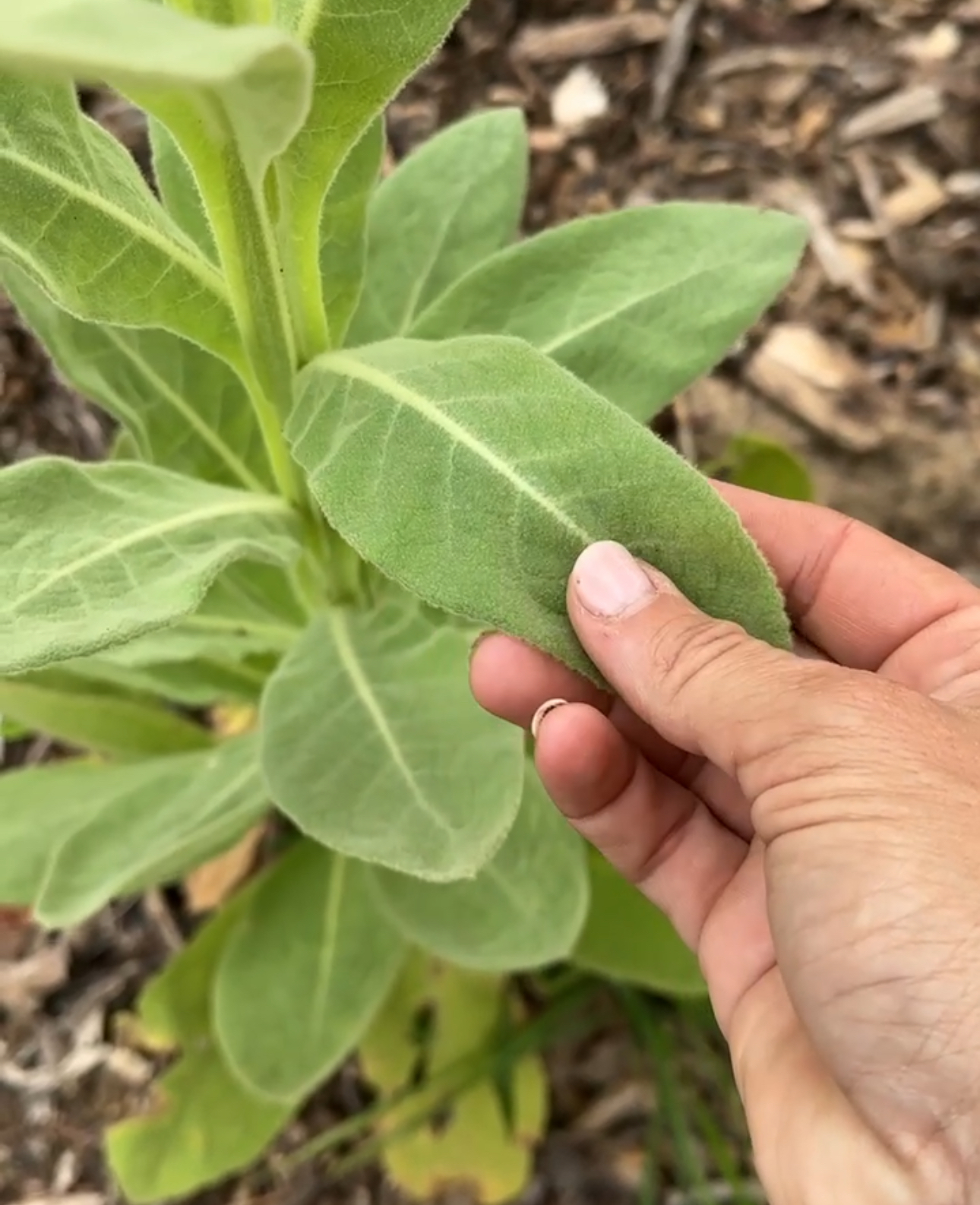Mullein weed is popping up at Sweet Bombdiggity Farms! I don’t grow it on purpose, but our ancestors knew its value and foraged it for all sorts of things. Here are two reasons why mullein is awesome:
1️⃣ Breathing Easy: Mullein is amazing for respiratory issues. If you’ve got a cough or congestion, this plant can help clear things up.
2️⃣ Ear Ache Remedy: Mullein oil is a traditional remedy for earaches. Who knew?
Easy Mullein Respiratory Support Tea Recipe:
1. Pick some fresh mullein leaves (you can also use dried ones).
2. Give them a good rinse.
3. Boil some water and steep the leaves for about 10 minutes.
4. Strain, sip, and enjoy the benefits!
Mullein Oil for Ear Aches:
1. Dry mullein flowers.
2. Steep the dried flowers in olive oil for several weeks.
3. Strain the oil and store it in a dark glass bottle.
4. Use a few drops in the ear for relief from earaches.
Give it a try and see why this “weed” was a favorite of our ancestors. Happy foraging!
#MulleinMagic #ForagedMedicine #sweetbombdiggityfarms
————-
Mullein Fact Sheet
Common Name: Mullein
Scientific Name: Verbascum thapsu
Often Called: Wooly Mullein or Flannel Plant
Identification:
Mullein is easy to spot with its tall, velvety leaves and bright yellow flowers that grow on a spike.
— Mullein is a tall plant with pale, fuzzy leaves and long flowering stalks. In its first year, it grows as a low-lying rosette. In the second year, it produces a single tall stem with yellow flowers. The leaves are felt-like and pale green, ranging from 4 to 12 inches in length.
Native to: Europe and Asia, now naturalized throughout the United States
Where it Grows: Common in pastures, meadows, vacant lots, and other disturbed sites. It thrives in gravelly soils and can grow in both moist and dry conditions.
Growth & Life Cycle: Biennial (completes its life cycle in two years) Height: 3 to 10 feet, Width: 2 to 3 feet
Common mullein blooms from mid-spring to late summer, with a few flowers opening at a time along the branched flower spikes. The plant produces numerous two-chambered fruits that contain 100,000 to 250,000 small, dark seeds that can last up to 100 years in the soil.
Origin
Common mullein is native to Eurasia but was introduced to North America in the mid-1700s for its medicinal properties. It spreads solely by seed, and most seedlings emerge in open areas like those created by animals or construction machinery. While it’s common in some areas, it’s generally not considered an aggressively invasive species, except in parts of western North America.
Historical Uses:
Mullein has been used for centuries in traditional medicine for its various health benefits. Our ancestors often foraged for mullein to treat a variety of ailments.
For more info, check out the NC gardener Extension Plant Toolbox https://plants.ces.ncsu.edu/ or University of Nevada Extension https://extension.unr.edu

